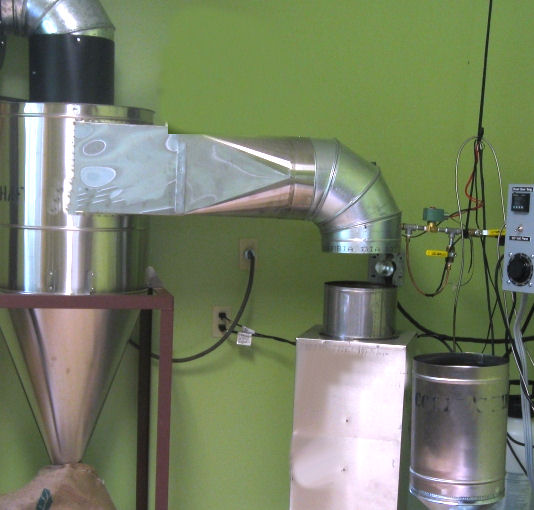Fluid-bed Coffee Roasting Technology

This is a far superior form of roasting to the more traditional drum roasting, as is supported by our customers and their customers who come back time and again for the fresh-tasting roasted coffee. Basically, fluid bed roasting is similar to the action you would see in a hot-air popcorn popper.
The beans roll over in superheated air, and the unwanted by-products of the roast (burnt chaff, undersize or broken beans, etc) get expelled by the hot air draught. In addition, our roasters come with forced air cooling outside the roast drum, which gives almost instantaneous cooling and allows for the next roast to be in the roast chamber.
A fluidized bed is simply a bed of solid particles–in this case coffee, nuts, or chocolate–with a stream of air passing upward through the particles at a fast enough rate to make the particles behave as a fluid. Because the beans are completely immersed in the heated air stream, heat is transferred evenly across the surface of the bean, which allows for a consistent, even, and reproducible roast.
Fluid bed roasters’ three distinct advantages lie in efficiency, control, and reproducibility. These improvements are found in three places: in the machinery, in the roasting process, and in the final, roasted bean.
First, because a fluid bed roaster has only one moving part–the blower impeller–the roaster is both reliable as well as easy to clean and maintain. Also, the major energy expenditures are isolated to the blower and burner, allowing for the use of various types of energy recovery systems and power saving techniques.
Second, these roasters come with a multitude of controls and highly accurate sensors that allow for a consistent roasting process. For example, air temperature and flow rates can be controlled very precisely, so that once a bean has proven to roast best at certain criteria, that roast can be accomplished accurately and consistently based on those settings.
And third, because the roast chamber walls are closer to the temperature of the beans, or nuts, or whichever product is being roasted, there is less conductive heating, so even when the products do touch the sides of the roast chamber they are gaining significantly less heat from the chamber sides relative to the heat from the bulk air flow. The circulating air removes impurities on the product and results in less tar and carbon buildup (in the case of coffee the chaff, the outer skin of the coffee cherry that comes off during roasting). And by proper placement of the temperature sensors, you achieve very accurate measurements. There is also evidence that without that direct contact on the heat source, the roasted items retain more of their nutritional value.
Links:

